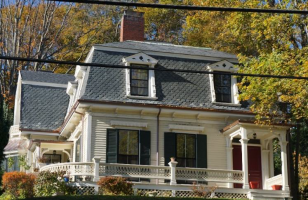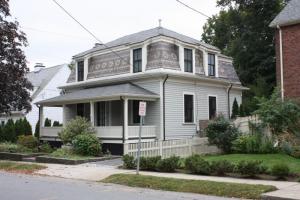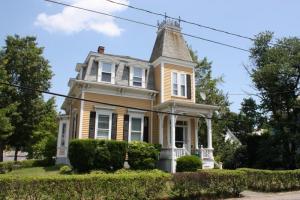French Second Empire: 1855-1880
French Second Empire: 1855-1880
Based on the latest French fashions, this style existed at about the same time as the Italianate and its details including heavy trim, porches, and brackets are quite similar. The defining characteristic of the Second Empire style is the mansard roof that can have concave, convex or straight sides and was typically covered in slate with dormers.
Examples Found in Belmont:

Capt. James Homer House, 1865 | 613 Pleasant St.
This dwelling is important as the house of a famous Belmont Resident, Capt. James Homer, the uncle of Winslow Homer, the famous American artist. It is believed that Winslow Homer acquired his love for the sea following a voyage with his uncle. The house was eventually sold by the Homers to Arthur Parker Stone, Judge of the Third District Court of Middlesex, and owner of the property for 50 years.

W.H. Locke House, 1875 | 55 Alexander Ave.
The house is of interest as a modest, scaled-down example of the French Second Empire style which was utilized in Belmont in a more elaborate fashion for a number of mansions along Pleasant Street and houses in Waverley. The cottage was built on the farmland of W.H. Locke and was in place by the time of the 1875 map. He had married his wife Sarah in 1869 and it is possible that the house was built at that time. W.H. Locke is also shown as the owner on the 1889 map. William H. Locke died on July 23, 1889 and the 1898 Atlas indicates that the property was still owned by his heirs.

4 Cambrdige St., 1876
The house at 4 Cambridge Street is one of several similar French Second Empire cottages in Waverley, and is notable for its high level of integrity including the fact that it retains its tower.


